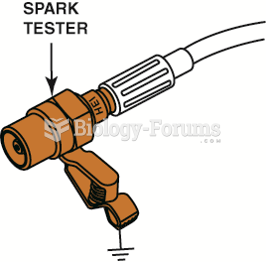|
|
|
Bacteria have flourished on the earth for over three billion years. They were the first life forms on the planet.
Disorders that may affect pharmacodynamics include genetic mutations, malnutrition, thyrotoxicosis, myasthenia gravis, Parkinson's disease, and certain forms of insulin-resistant diabetes mellitus.
Hypertension is a silent killer because it is deadly and has no significant early symptoms. The danger from hypertension is the extra load on the heart, which can lead to hypertensive heart disease and kidney damage. This occurs without any major symptoms until the high blood pressure becomes extreme. Regular blood pressure checks are an important method of catching hypertension before it can kill you.
During the twentieth century, a variant of the metric system was used in Russia and France in which the base unit of mass was the tonne. Instead of kilograms, this system used millitonnes (mt).
In the United States, an estimated 50 million unnecessary antibiotics are prescribed for viral respiratory infections.
 Feelings of competence, independence, and relatedness lead to a sense of overall well-being in any ...
Feelings of competence, independence, and relatedness lead to a sense of overall well-being in any ...
 Anxiety rises as needs are not met. Without resolution, anxiety may lead to frustration, and then, ...
Anxiety rises as needs are not met. Without resolution, anxiety may lead to frustration, and then, ...





